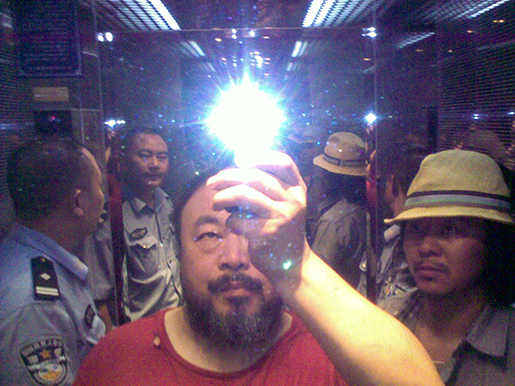Installation on the project began last week, and groups of around 75 people have served as guinea pigs to fine-tune the technology, including facial recognition software and heat-mapping. This resulted in some unexpected lessons about surveillance for the organisers, such as that clothing made from breathable fabrics like cotton makes a person easier to pick up on camera, Robertson explains. This was perhaps old news to Ai, who was kept under house arrest in China for years, and joked at the press preview that the accuracy rate for China’s facial recognition technology is "150%".
Overall, the installation is “a balance between menace and fun”, Robertson says. “I think it’s like sex—sometimes lust comes with pain, but not everybody likes it. Sometimes feelings can be very contradictory,” Herzog says. He adds that an art project like this, “which is not an ordinary space, has a more complex psychological structure. It gives you more possibilities to enjoy or to perceive—and hopefully we have achieved such a complexity.”
Guests are able to wander the floor of the Armory, which has been given a slight curvature, as if everyone is walking across the top of a submarine. A series of 56 computers with infrared cameras canvas the area, tracking and photographing all human motion. If you stand in one place for a few seconds, the technology will freeze and project your grainy image on the floor, and you can generate a series of ghostly portraits.
The second stage of "Hansel & Gretel" is shown accessing through the traditional main entrance of the Armory, the area is a kind of educational room. Visitors who’ve just left the surveillance area can explore the show’s major themes on tablets; they can also snap photographs of themselves, and they can choose to have their facial-recognition portraits printed for $10?
Park Avenue Armory president Rebecca Robertson, during press remarks, said she hoped the installation would be “mysterious and strange and scary, as surveillance often is.” It is far from being that sort of experience. What’s meant to be a cautionary tale ends up merely as a game, one that will appeal both to kids and those posting surveillance-selfies on Instagram.
The work builds on the artists’ shared practice as designers of form and investigation. Ai Weiwei has described their collaborations as follows: “My experience of working with Jacques and Pierre is that we never think separately. It’s like three soldiers in the war—and that’s a good feeling: we have a constant understanding.”
Hansel & Gretel is supported in part by the M K Reichert Sternlicht Foundation, Jeanne Donovan Fisher, Ken Kuchin and Tyler Morgan, and by public funds from the Swiss Arts Council Pro Helvetia.





























